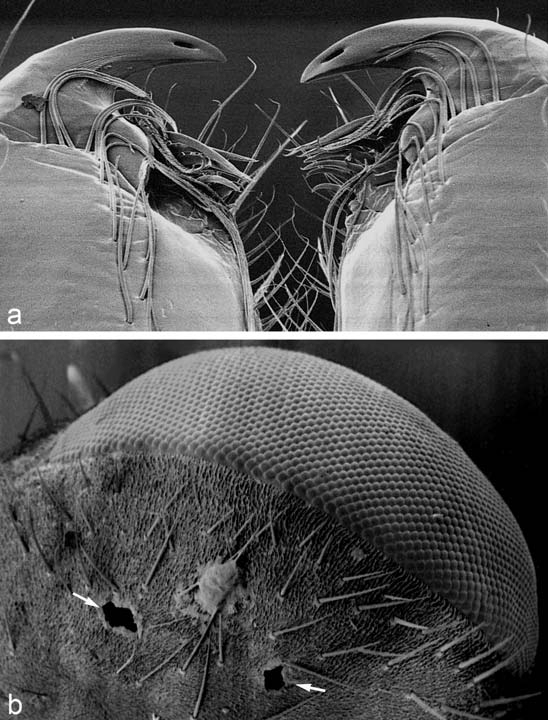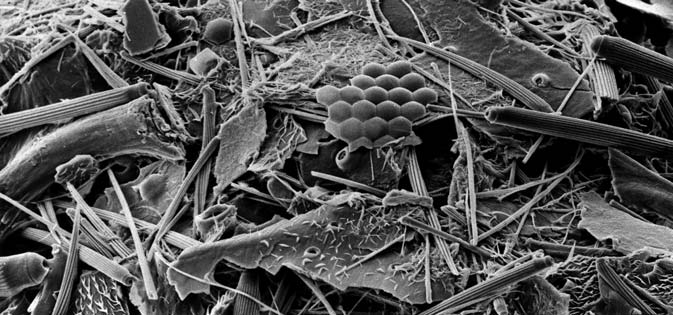博文
Biology of spiders :Metabolism 01
|||
Metabolism
本文翻译自 Foelix, R. (2011). The Biology of Spiders. New York: Oxford University Press.第三章
Spiders have developed an unusual mode of food intake: digestion is initiated out- side the body. After the prey has been subdued by a venomous bite or wrapped with silk, the spider regurgitates some digestive fluid from the intestinal tract onto the victim. After a few seconds, a drop of the predigested liquid prey is sucked in, and this process is then repeated many times.
蜘蛛已经发展出一种不同寻常的进食方式:消化是从体外开始的。在猎物被蜘蛛用毒素咬伤或用丝包裹住后,蜘蛛会将一些消化液从肠道反流到猎物身上。几秒钟后,一滴预先消化的液体猎物被吸入,然后这个过程重复多次。
Feeding behavior differs markedly among the various spider families and depends on whether cheliceral teeth are present or not. Theridiids and thomisids, which have few or no cheliceral teeth, inflict only a small wound on their prey. The digestive fluid is pumped in and out through this hole, and the dissolving tissue is gradually sucked out. After the meal the prey remains as an empty shell that appears externally unharmed (fig. 3.1). Spiders with cheliceral teeth mash up their prey so that it can hardly be identified afterward. For instance, when an orb weaver has finished with a fly, it leaves only a small ball of conglomerated cuticular parts (fig. 3.2). Similarly, after a large tarantula has captured a frog, the combined action of the digestive fluid and the continuous mashing of the chelicerae soon produces an unrecognizable mass of tissue with only a few protruding bones (Gerhardt and Kaestner, 1938).
不同科的蜘蛛的取食行为有很大的不同,取决于是否有螯牙。球蛛科和蟹蛛科的蜘蛛它们很少或没有螯齿,在猎物身上只会留下一个小伤口。消化液通过这个孔被泵入和泵出,溶解的组织逐渐被吸出。吸完猎物内部组织后,猎物仍然是一个空壳,外表看起来没有受到伤害(fig.3.1)。长着螯齿的蜘蛛将猎物捣碎,这样之后就很难辨认出猎物的身份。例如,当一个圆网蜘蛛取食完一只苍蝇时,它只留下一个由聚集的角质部分组成的小球(fig.3.2)。同样,在一只大型捕鸟蛛捕获青蛙后,在消化液和螯牙的持续碾碎的联合作用后,(青蛙)很快就会产生一大块无法辨认的组织,只有几块突出的骨头。
Although spider venom may contain some proteolytic enzymes (Kaiser and Raab, 1967), it plays an insignificant role in actual digestion. Little is known about the glands situated inside the maxillae and the rostrum. Probably their secretions probably serve mainly as saliva to soften the food.
尽管蜘蛛毒可能含有一些蛋白水解酶(Kaiser和Raab,1967),但它在实际消化中起着微不足道的作用。人们对位于下颚和吻突内的腺体知之甚少。可能它们的分泌物可能主要用作唾液来软化食物。

Figure 3.1
(a) Cheliceral fangs of the crab spider Xysticus (rear view). Note the large openings of the poison canal and the lack of cheliceral teeth. 160x. (b) Backside of a fly′s head showing the two bites holes inflicted by the cheliceral fangs shown in (a). 110x. (From Foelix, 1996).
图3.1(A)蟹蛛Xystius的螯牙(后视图)。注意毒管的大开口和缺少螯齿。160倍。(B)fly‘s头部背面,显示(A)图所示的螯牙在苍蝇头上留下的两个咬孔。110倍。(摘自Foelix,1996)

Figure 3.2
Remnants of a blowfly after a garden spider (Araneus diadematus) had been feeding on it. Only few cuticular pieces such as some bristles or the corneal lenses of the compound eye can still be identified. Note that all hair shafts are no longer connected to their sockets, which indicates that the endocuticular joint membranes were dissolved by the digestive enzymes. 150 x. (Photo: Peters and Hüttemann).
一只绿头苍蝇被花园蜘蛛(Araneus Diadematus)取食之后的残留物。仅有少量的角质片,如复眼的一些刷毛或角膜晶状体仍能被识别(fi)。注意,所有的毛干都不再与它们的眼窝相连,这表明表皮内的关节膜已经被消化酶溶解了。150倍。(图片来源:彼得斯和胡特曼)
https://blog.sciencenet.cn/blog-3411995-1243982.html
上一篇:[转载]How to mark a money spider with a body length of 1.6 - 2 mm
下一篇:Biology of spiders : metabolism 02 毒腺和毒性
全部作者的其他最新博文
- • 实验2 体格检查
- • 实验1 牛乳掺伪的检验
- • 教学演练设计
- • [转载]怎样养成好习惯
- • 漏斗蛛
- • [转载]你知道你有5种不同的食欲吗?